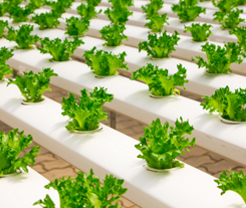Plant extracts constitute an extremely valuable source of biologically active compounds (secondary metabolites) commonly used in cosmetic industry. One of the main obstacles encountered during the search for secondary metabolites in plant extracts is the presence of so-called ballast compounds, which include chlorophyll. These green pigments are responsible for absorption of sunlight neccessary for photosynthesis. Due to their high concentration in plant tissues, and their propensity to absorb light in a broad spectrum, chlorophylls pose signifficant problem during chromatographic analysis of plant extracts, which in turn may make it difficult or even impossible to detect the desired biologically active compounds.
Existing chlorophyll removal techniques commonly used in research laboratories, such as Solid Phase Extraction (SPE), dispersive Solid Phase Extraction (dSPE) or Graphitized Carbon Black (GCB) extraction are complex and expensive.
Developed technology provides effective tool for chlorophyll removal from aqueous and organic extracts obtained from plant tissues containing secondary metabolites. The method, based on organic and inorganic copper salts, is characterized by high efficiency, low cost and minimal environmental impact due to non-toxicity of the final product – chlorophyllin.
Presented method can be widely applied in cosmetic or pharmaceutical industries, in order to simplify the search for, and extraction of biologically active compounds.

